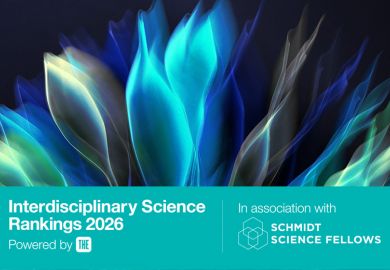Browse the full Times Higher Education World Reputation Rankings 2018 results
Vision, innovation and passionate people, or VIP, have helped South Korea and the Korea Advanced Institute of Science and Technology (KAIST) to grow. Such qualities have led KAIST to emerge as one of the most innovative universities in only 47 years.
In the 1960s, elite students in South Korea went abroad for advanced studies. Most of them didn’t come back home and brain drain was a serious problem.
But there was one young Korean professor at the Massachusetts Institute of Technology in 1969 who had a plan to return to his home country. Kun-Mo Chung was one of the elite students who went to the US with a full scholarship from the US and Korean governments and completed his PhD at Michigan State University. His humble but audacious idea to keep local talent at home planted the seeds of change.
Chung wrote a proposal to set up a science and technology university and sent it to his professor, John Hannah, who had recently taken charge of the US Agency for International Development after serving as the president of his alma mater, Michigan State University.
After successfully obtaining a $6 million (£4.3 million) loan from Usaid, Chung persuaded the South Korean government to establish the first research-oriented science and technology university.
Initially, government officials were not sold on the idea. There was a great deal of disagreement on the need for such a university among the academic community and policymakers. Finally, visionary leaders including the late president Park Chung-hee made a bold decision to adopt the plan.
The government created a special law to manage the establishment and operation of KAIST. It made Korea’s first research university an “institute” rather than a “university” and assigned the oversight to the Ministry of Science and Technology to avoid any possible conflict with other universities under the supervision of the Ministry of Education.
The government mandated two institutional missions. One was to educate scientists and engineers who would work on the nation’s industrialisation. The other mission was to conduct basic and applied research for advancing science and technology, which would drive the nation’s economic growth.
KAIST opened in 1971 and started to recruit the most elite students with a package of benefits including a full scholarship, free room and board, and exemption from mandatory military service. It also lured a top group of faculty members with a salary package three times higher than other domestic universities.
Chung served as the founding provost of KAIST and as minister of science and technology twice. Now in his eighties, he still teaches at KAIST.
Since then, KAIST has served as a pipeline for supplying high-calibre researchers and engineers for Korea’s industrialisation. Even in the early days, demand for KAIST graduates was very high. Some companies, keen to recruit KAIST graduates, did so by making donations to support their studies.
The relatively flexible institutional position that KAIST enjoyed compared with other domestic universities led to innovations that enhanced our competitiveness. KAIST was the first university in Korea to launch a holistic admissions system, the faculty tenure system, campus globalisation initiatives, and lectures in English.
Another distinct feature of KAIST is its long history of collaboration with industry.
From the early 1960s, the government began to invest in the science and technology sectors and provide scholarships to elite students going abroad for further studies. During the 1970s, the government sponsored the development of selected technologies in government-funded research institutes for the strategic promotion of key industries. And in the 1980s, the government encouraged the private sector to initiate its own research and development investments with various policy implementations including tax breaks.
In addition to increasing R&D investment, the government enacted the Technology Promotion Law in 1981, which laid the groundwork for the private sector to join government-designated technology R&D projects. Since then, the communications industry has flourished as a powerhouse in Korea.
In particular, collaboration among the triple helix of industry, government and academia has been promoted by the state for decades. KAIST has been a key player in national R&D projects and those projects later became the backbone of the infrastructure for the nation’s major industries, which led to the culmination of Korea’s information and communication technology revolution.
Experiences of working with the private and public sectors have enriched KAIST’s research competitiveness and academic rigour. Accordingly, KAIST has developed top-notch global research capabilities through numerous industrial collaboration initiatives. The relationship between KAIST and industry for bringing technology to market has been well established.
According to Thomson Reuters, KAIST filed 823 patents from 2010 to 2015 and 82.1 per cent of its applications were granted. This is the highest rate among universities in the Asia-Pacific region and makes us the most innovative university in the region.
For the past 47 years, our 62,000 graduates, including 12,400 PhD graduates, have been key players behind Korea’s innovation, industrialisation and informatisation. In the semiconductor industry, which is dominating the global market, one in every four PhDs is a KAIST alumnus.
Global brains now come to KAIST for their advanced studies. KAIST has more than 900 students from 92 countries. More than 85 per cent of classes are conducted in English.
Since its foundation, government funding for KAIST has amounted to 3.1 trillion won (£2 billion). KAIST graduates have founded 1,456 companies, created 32,000 jobs and are making 13.6 trillion won in annual sales. In terms of a return on investment, I think that KAIST is one of the most successful government investment projects.
As the first alumnus president of KAIST, I feel a great responsibility to move this institute forward, opening a new chapter for KAIST in a complex and dynamic global environment.
In March, I initiated Vision 2031, a blueprint for KAIST’s future looking towards its 60th anniversary. This strategic development plan for a “Global Value – Creative Leading University” is intended to make KAIST one of the top universities in the world by 2031.
Embracing the megatrends of the fourth industrial revolution, and innovation initiatives in the pillars of education, research, technological commercialisation, globalisation, and future strategy will further advance the excellence of KAIST and help it to become a trailblazer in South Korea and beyond.
Sung-Chul Shin is president of the Korea Advanced Institute of Science and Technology.
POSTSCRIPT:
Print headline: Meteoric rise
Register to continue
Why register?
- Registration is free and only takes a moment
- Once registered, you can read 3 articles a month
- Sign up for our newsletter
Subscribe
Or subscribe for unlimited access to:
- Unlimited access to news, views, insights & reviews
- Digital editions
- Digital access to THE’s university and college rankings analysis
Already registered or a current subscriber?







